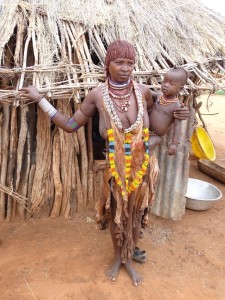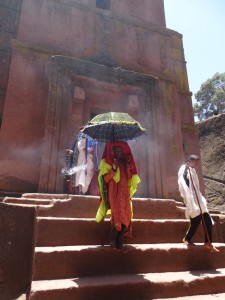After venturing twice to Ethiopia in the last two years with Addis Abbas-based Jacaranda Tours, I’ve come to the conclusion that four weeks there just isn’t enough time to explore one of the world’s largest and most diverse nations. With culture, history and landscapes as the focus rather than just wildlife or beaches, Ethiopia stands far apart from other African destinations. I thought I’d share some of my thoughts on this intriguing country.
- You can learn about Ethiopia in books and on TV, but until you experience the East African country firsthand it’s impossible to fathom the absolute richness of Ethiopian culture – from the island monasteries of Lake Tana and the rock-hewn churches of Lalibela, to the unique wildlife of the Simien Mountains and the vibrant tribes of the Omo Valley.
- Ethiopia is a living crossroads of civilization that plays out in front of your very eyes, a mingling of Africa, Asia and the Middle East, as well as Christian, Judaic, Islamic and ancient tribal traditions.
- The landscapes and scenery are far more impressive and dramatic than you can ever imagine from photos or videos. And there is such a wide variety of geography, from the Gheralta region (reminiscent of the American Southwest) and super-arid Danakil Desert to the lake-filled Rift Valley and tropical woodlands and savannahs in the deep south.

- The tribes of the Omo Valley – is it already too late to preserve their cultures? The development of sugar factories and hydroelectric projects in the region, as well as the construction of modern roads and airfields to service those facilities, means these ancient peoples are being overwhelmed by outside influences both good and bad. Some experts predict the traditional ways of the Mursi and Hamar people — like lip plates, scarification and semi-nomadic herding — won’t last another generation.
- Visiting the indigenous people of the region was a lot harder than I anticipated. You really have to suspend judgment when visiting the Mursi (with their DVD-sized lip plates) and Hamar (with their intense tribal scarring) because their lifestyles and living conditions are so very different from our own and even the rest of Ethiopia.
- The Mursi people were so aggressive about wanting you to take their photo — and getting paid for each and every snap — that our visit just wasn’t enjoyable to me (we had long philosophical discussions about who is to blame – the tourists, the tribe or both). The Hamar, Ari and Dorze tribes were much more pleasant encounters.
- I found the most “authentic” cultural experiences were up north, the Orthodox Christian heartland, where people don’t stop what they are doing for tourists and expect to have their photo snapped for instant cash. They simply welcome visitors and then continue with everyday life.

- Traveling during Ethiopian Orthodox Holy Week? Be sure to pack earplugs, as services start at 3 AM and are blasted over loudspeakers.
- Ethiopia boasts several iconic animal species including a rare and very distinctive primate called the Gelada (Theropithecus gelada) and Ethiopian Wolf (Canis simensis). Encountering Geladas — one of the world’s most terrestrial (land-dwelling) primates other than our own species — in troupes that sometimes run to hundreds of individual animals, is mind blowing. Africa’s most endangered carnivore, the Ethiopian Wolf is most often seen in Bale Mountain National Park, there are only 500 left. Found at over 12,000 feet on a high plain, the coyote-sized canine primarily feeds on Afro-Alpine rodents.

- Ethiopian roads are better than expected (thanks to lots of recent construction). On the other hand, most of the hotels (especially outside of the capital) are worse than expected. With very few exceptions, the accommodation situation in the provinces need vast improvement – in particular screens in the windows, ceiling fans or air conditioning, and mosquito netting. There is no such thing as consistency. But help is on the way: Jacaranda is developing new luxury properties in Gonder, Lake Tana, Axum and Simien Mountains National Park.
HUGE thanks are in order for Ethiopian Airlines for providing my ticket and of course, Jacaranda Tours for the arrangements. What’s do I want to do during my next visit there? I hope to go to the Danikil Depression (hottest place on earth) and eastern Ethiopia.
 An expert in adventure and wildlife destinations worldwide, Jane Behrend started her own travel marketing company in 1989 after learning the business as an account executive in public relations and advertising sales. In 2008, Jane rebranded her business as Emerging Destinations, a company that represents cool companies in cool places around the globe. She chose the name because her passion is working with areas where tourism is relatively new and still off the beaten path. Contact her at jane@emergingdestinations.com or at emergingdestinations.com.
An expert in adventure and wildlife destinations worldwide, Jane Behrend started her own travel marketing company in 1989 after learning the business as an account executive in public relations and advertising sales. In 2008, Jane rebranded her business as Emerging Destinations, a company that represents cool companies in cool places around the globe. She chose the name because her passion is working with areas where tourism is relatively new and still off the beaten path. Contact her at jane@emergingdestinations.com or at emergingdestinations.com.



